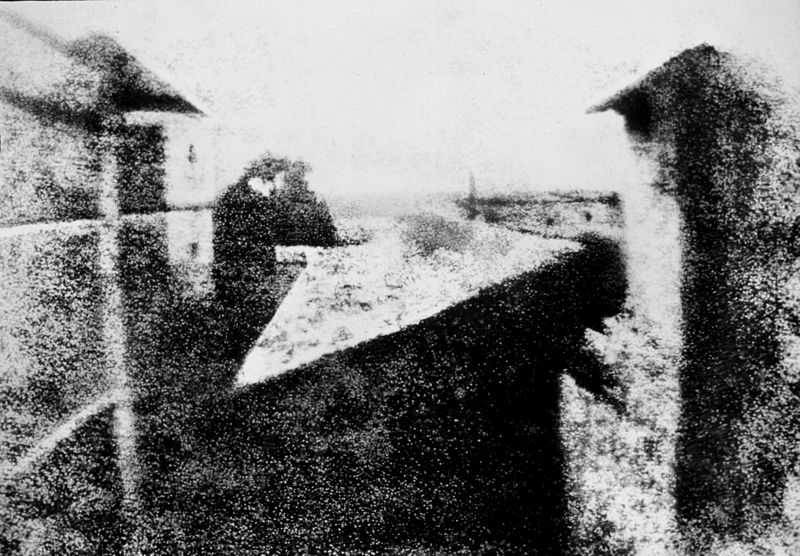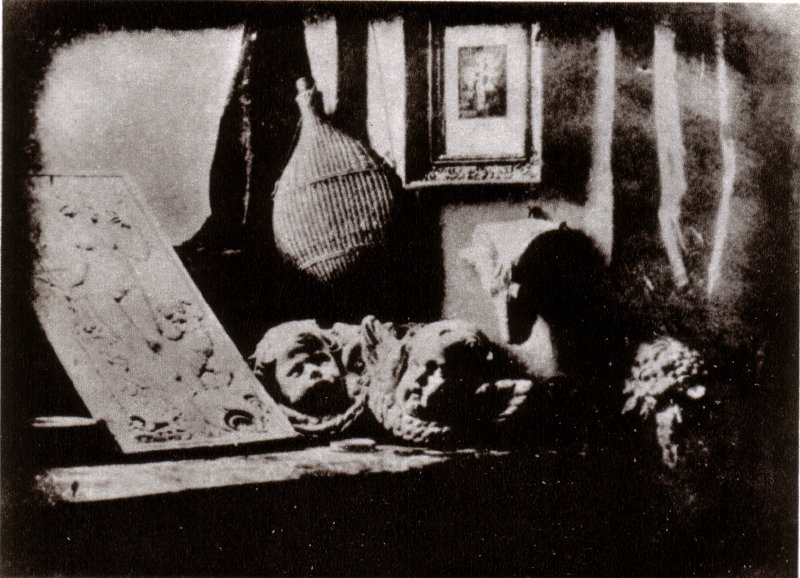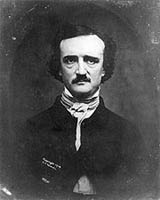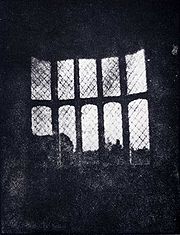
|
|
|
|
First Device to Create an Image
Before there was light sensitive materials to record light, there was the camera obscura. (Latin - veiled chamber) or darkened room
had a small "pinhole" in the middle of one wall which would project a full color inverted image on the opposite wall. An artist would sketch the image on
paper or canvas, and then take the sketch and finish by normal means. Because the room was large and hard to move, its use was limited to large stationary
subjects or landscapes in full sunlight.
Because of the expense of building a large room and the hours involved sketching by hand a faint image projected on the wall,
the camera obscura was limited to artist who used the device to quickly sketch an image in perfect perportion and then later finish the
work as a completed painting. There was still no light sensitive materials that could "capture" the faint image.
|
|
|
|
Camera Design
The camera obscura was reduced in size and instead of drawing inside on the wall a translucent piece of
glass or wax paper was used to view the image outside the box. As the box was reduced in size the image became smaller and
brighter. With the addition of a simple convex lens the image became even brighter.
These improvements made the camera smaller, cheaper, mobile, with a brighter sharper image but there was still no material
light sensitive enough to "capture" an image directly. This left all the camera designs as specialty tools for the artist or
as parlor entertainment by creating images and projecting them on walls. It was understood that light could change materials
(Just like window drapes fade in direct sunlight), but it wasn't untill the 1800's before anything sensitive enought to be used in a camera
would be dicovered.
|
|
|
|
First Photograph ever Taken
Joseph Nicéphore Niépce is credited with taking the first permanent photograph.
Using an eight hour exposure on a polished pewter plate covered with a petroleum derivative called bitumen of Judea the sunlight hardened
the emulsion. After washing off the unhardened material and repolishing the plate a permanent image was produced. The plate
when viewed at a certain angle would show the lighted areas as a bright reflection and the unlit areas as a darker reflection. Since there
was no transparent area as the plate was solid metal there was no way to create copies or prints. The photo was one of a kind, called a Heliograph or
Sunlight Image.
Niépce continued experimenting with silver compounds and colaborated with Louis Daguerre for several years before dying in 1833. Daguerre
continued the work on his own and is credited with inventing the daguerreotype.
|

"View from the Window at Le Gras," taken in 1826 by French inventor Joseph Nicéphore Niépce in Saint-Loup-de-Varennes (France).
|
|
|
The Daguerreotype
After experimenting with different silver salts and switching to a thin copper plate Louis Daguerre was able to decrease exposure time
dramatically. Finally by exposing the silver coated plate to iodine vapors before exposure and mercury fumes after the exposure the light sensitivity
of the plate was increased to the point were a 10 - 15 minute exposure was all that was required. (as compared to eight hours for the Heliograph exposure)
A salt bath or hypo wash was used to "fix" the image by removing any unexposed silver leaving only the exposed silver as a permanent image.
There was no transparent negative involved, so there was no way to create multiple prints. This made Daguerreotypes one of a kind.
|

L’Atelier de l'artiste. An 1837 daguerreotype by Daguerre.
|
|
|
Daguerreotypes caught on quickly especially in the United States where portraiture or photographs of peoples likeness became a craze.
Photographs although small and monochromatic were relatively cheap compared to having a painting commissioned. Everyone wanted a photo of
themselves, loveones, and famous people. The 5 - 10 minute exposure was endured with the help of a head prop that would keep the head
still. Since there still was no way to make additional copies or prints The photographers couldn't keep up with demand. Because of the cost involved
and the fact that no additional prints were made, orginal Daguerreotypes are rare and quite valuable today.
|
 
Edgar Allen Poe - 1848 Abe Lincoln - 1846
|
|
|
Calotype Process
While Dageurre was perfecting his copper plate images, William Henry Fox Talbot was inventing the first negative/positve photo process.
Exposed silver salts when processed always results in the deposit of solid silver which is not transparent. Thus when you look at the exposed areas
of a photo plate it appears darker than the unexposed areas (no silver) thus the term negative. Talbot solved this problem by coating the silver salts
on a transparent paper backing. When the negative was processed and dryed it could be exposed in direct contact with another coated paper (not transparent)
which would reverse the light values producing a print with normal light values.
This process quickly replaced the duguerreotype because of the cost (metal plates vs transparent paper) and the ability to
produce multiple prints. The developing was also safer (it did not involve the use of iodine and mercury fumes, both extremly caustic).
|
|
|
|
While the Calotype process had advantages over the daguerreotype such as cost, ability to produce multile prints, shorter exposures,
(1-2 minutes compared to 10 - 15 minutes for the daguerreotype),
there were still many disadvantages such as paper negatives still had to be prepared by the photographer which required a darkroom.
The paper negative had a texture caused by the paper fibers themselves so the detail was not as sharp as a duguerreotype (which was
on a highly polished plate. Paper negatives were flimsy and easily torn or distroyed. The calotype process did replace the dugeurreotype
but was replaced itself by 1865 by another process, the Collodion or wet plate process.
|

Print from world's oldest photo negative Talbot - 1835
|
|